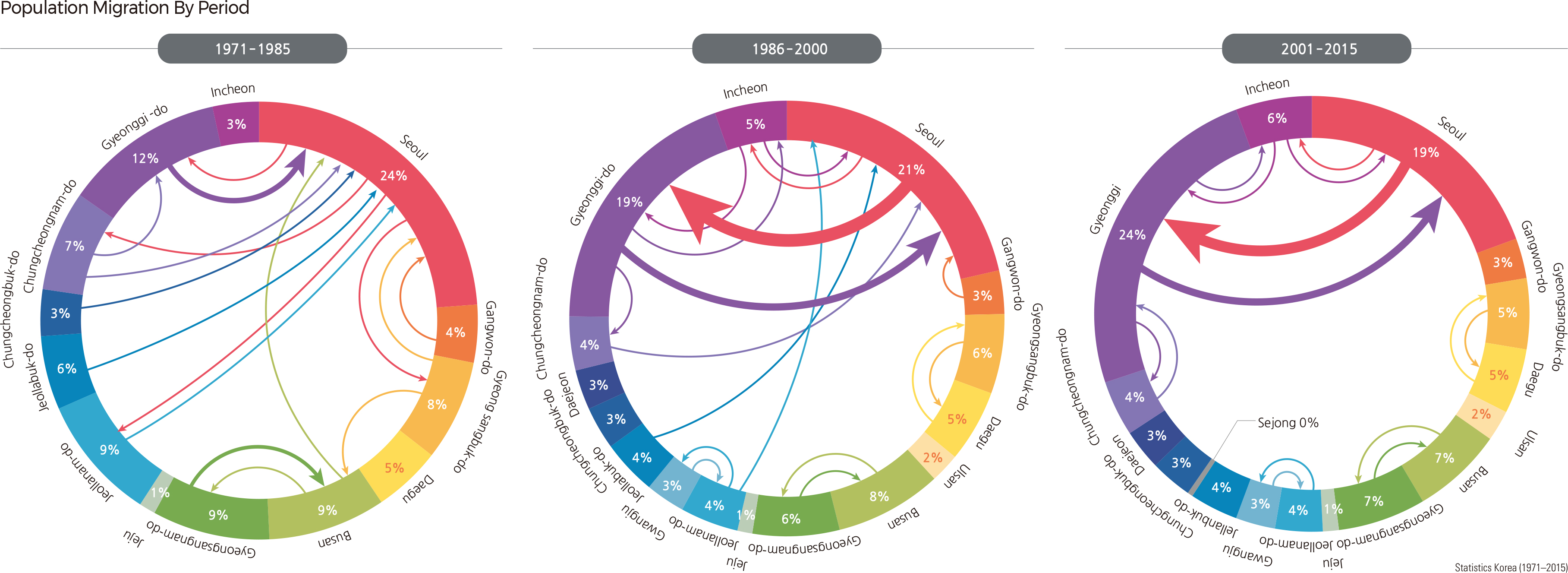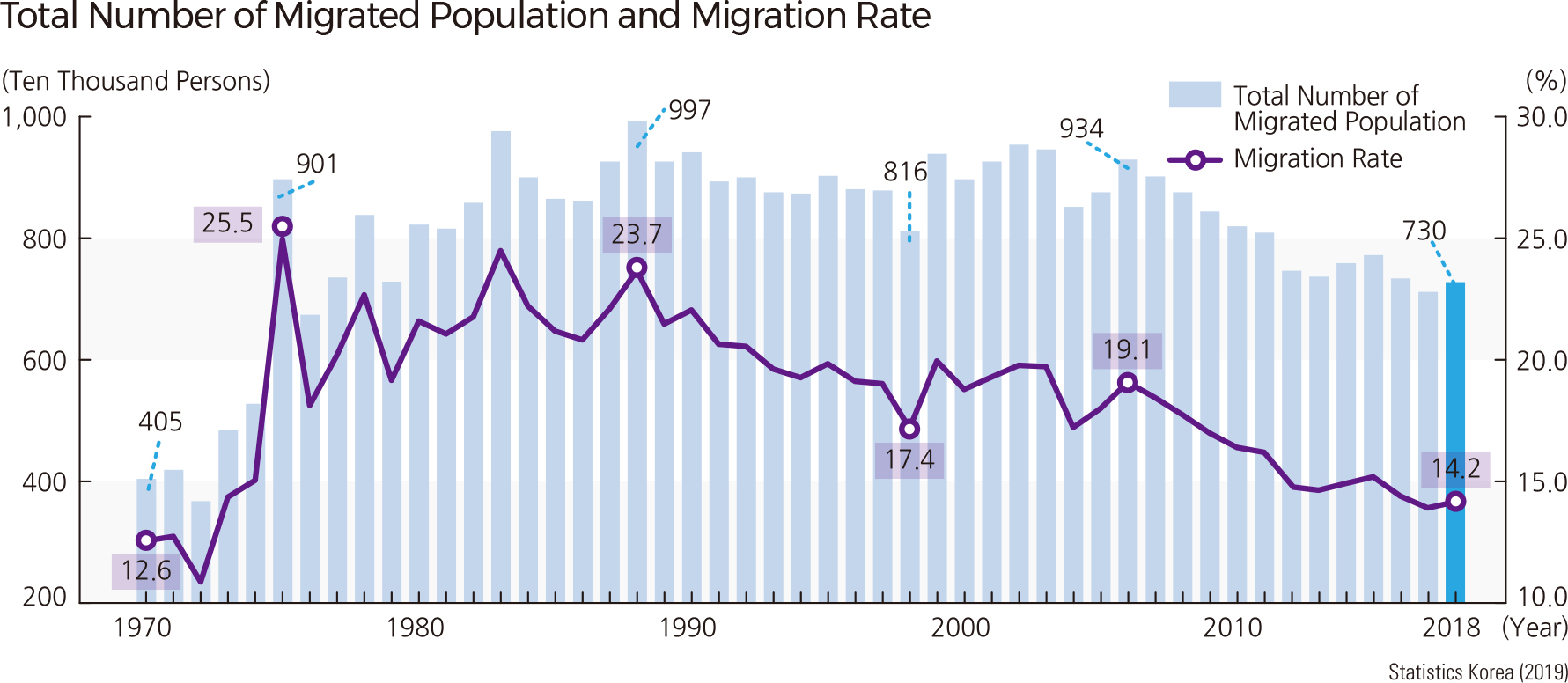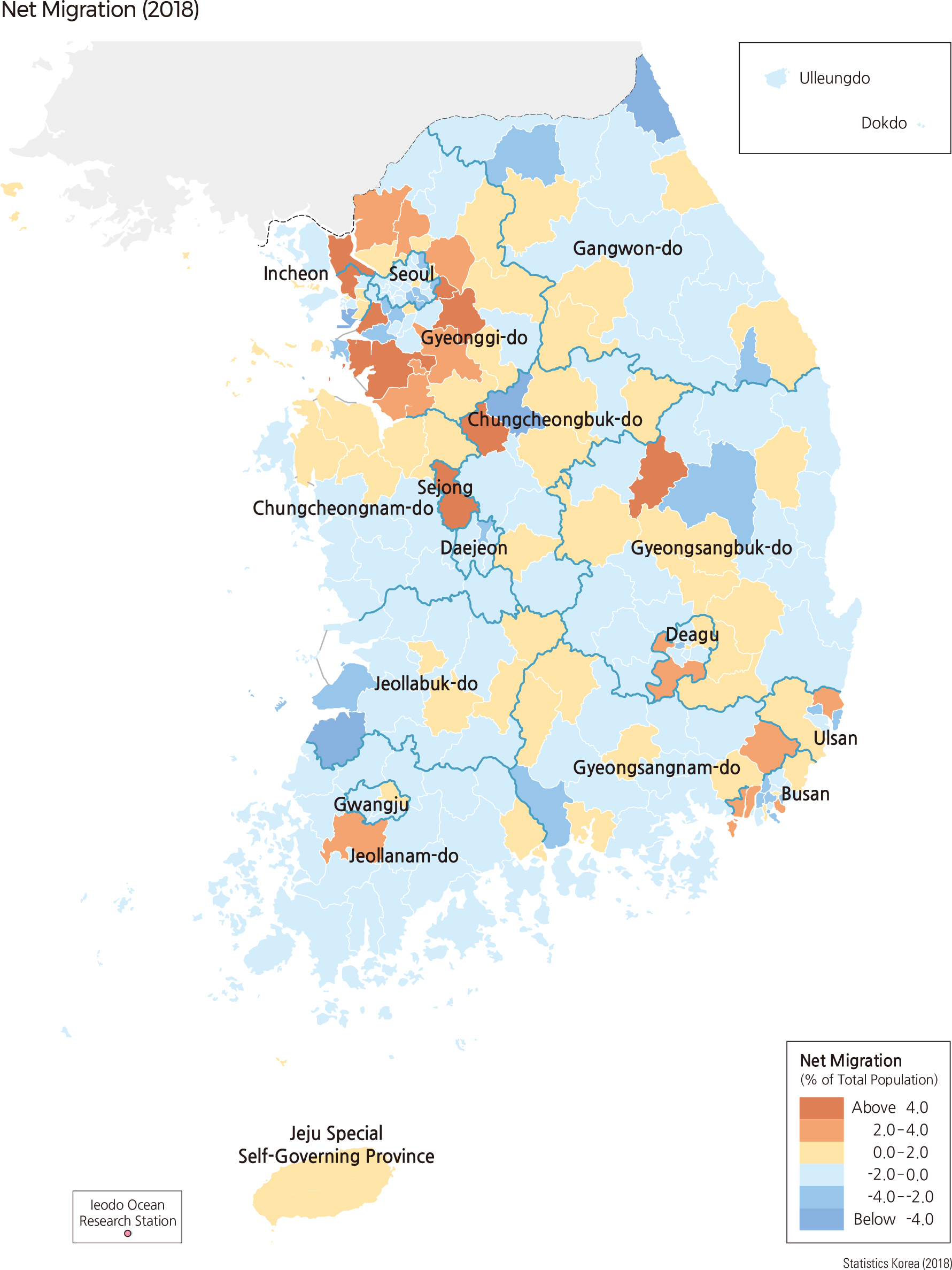English I 2019
Korea’s migrational patterns show that the number of migrants increased rapidly from 1970 to 1980; this trend decreased a bit in 1990, and finally, the absolute number of migrants has decreased since 2000. Since 1990, the data indicate that the population has settled down and become stabilized. The direction of migration and origin and destination distributions often reflect distance decay (basically, the closer the destination from the origin, the higher the volume of migration, and vice versa). The population migration patterns observed in Korea over the last half-century reflect the characteristics of urbanization more than distance decay in the 1970s and 1980s. Distance decay characteristics became much more prominent from the 1990s onward. Suburbanization/counter-urbanization has frequently appeared locally since 2000. Additionally, the percentage of the population returning to farming is on the rise due to the baby boomer generation retiring. Many new retirees are now heeding the call of local rural governments who are attempting to attract them to migrate to their territories. |





